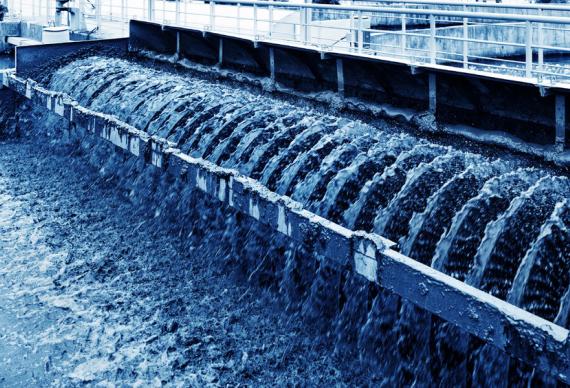SEWAGE:
Sewage is a combination of water and waste which contains organic and inorganic solids from various establishments such as commercial, industrial or residential etc. Hence cleaning up of wastewater is very much required. Yes, it’s the Sewage Treatment Plant which eliminates harmful contaminants in the most economical manner and provides a healthier environment.

PACKAGED SEWAGE TREATMENT:
Packaged Sewage Treatment Plant is an innovative and truly versatile system for the effective treatment of wastewater, including Nutrient removal. They can be configured for BOD reduction, suspended solids reduction, Ammoniacal and/or total Nitrogen reduction and Phosphorus reduction. Membrane Bioreactor (MBR) ‘s features have been built into the Single Packaged Plant to create the physical-biological tertiary treatment with water recycling.
Top 5 major benefits of Sewage Treatment Plant (STP) are as follows:
- STP is proven technology which offers reliable performance at all time.
- Sewage treatment plant preserves natural environment against pollution.
- STP meets the standards for emission of pollutants set by the Government & avoid heavy penalty.
- Simple and easy installation, low operation and maintenance.
- Installation of sewage treatment plant reduces risk to public health and the environment.
Key Features of Packaged Sewage Treatment Plants
Compact Design
One of the most significant advantages of packaged sewage treatment plants is their compact design. Unlike traditional systems, which often require extensive space for various treatment stages, PSTPs integrate all necessary components into a single, compact unit. This space-efficient design is ideal for urban areas where land is at a premium. The compact footprint also makes PSTPs suitable for installation in basements, rooftops, or other confined spaces, offering flexibility in site selection without compromising performance.
Prefabrication
Packaged sewage treatment plants are typically prefabricated in a controlled factory environment. This prefabrication process ensures high-quality construction and adherence to strict manufacturing standards. Prefabrication also significantly reduces on-site construction time and costs, as the units arrive at the installation site ready to be connected and commissioned. This method minimizes the disruptions associated with traditional construction activities and allows for quicker deployment of sewage treatment solutions.
Mobility
The mobility of PSTPs is another critical feature that sets them apart from conventional systems. These plants are designed to be easily transported and relocated, making them a versatile solution for temporary or semi-permanent installations. For instance, PSTPs can be employed at construction sites, remote mining operations, or military bases where wastewater treatment needs may change over time. The ability to move the plant as required ensures continuous compliance with environmental regulations, regardless of location changes.
Flexibility
Flexibility in design and operation is a hallmark of packaged sewage treatment plants. They can be customized to meet specific treatment requirements based on the volume and characteristics of the incoming sewage. This adaptability makes PSTPs suitable for a wide range of applications, including residential complexes, commercial establishments, industrial facilities, and remote communities. The modular nature of these systems allows for easy expansion or modification to accommodate increased capacity or changing regulatory standards.
Plug-and-Play
The plug-and-play nature of PSTPs simplifies the installation and commissioning process. Once delivered to the site, these units can be quickly connected to existing infrastructure and made operational with minimal technical intervention. This feature is particularly beneficial for locations with limited access to skilled labour or where rapid deployment is essential. The straightforward setup process reduces downtime and ensures the sewage treatment plant can start functioning without lengthy delays.
Treatment Processes
Packaged sewage treatment plants incorporate a variety of treatment processes to effectively manage and treat wastewater. These processes typically include primary treatment (screening and sedimentation), secondary treatment (biological processes such as activated sludge or membrane bioreactors), and tertiary treatment (filtration, disinfection, and nutrient removal). Advanced technologies such as Moving Bed Biofilm Reactors (MBBR) or Sequencing Batch Reactors (SBR) can also be integrated into PSTPs, ensuring high-quality effluent that meets stringent regulatory standards.
Odour Control
Effective odour control is a critical consideration in the design of packaged sewage treatment plants. Odour management systems are incorporated to minimize unpleasant smells, ensuring that the treatment process does not negatively impact the surrounding environment or community. Techniques such as activated carbon filters, biofilters, and chemical scrubbers are commonly used to treat odorous gases before they are released into the atmosphere, enhancing the overall acceptability of the treatment plant.
Automation
Automation plays a crucial role in the efficient operation of packaged sewage treatment plants. Modern PSTPs are equipped with advanced control systems that monitor and regulate various treatment processes in real time. Automated systems can adjust parameters such as aeration, chemical dosing, and sludge management based on continuous data analysis, optimizing performance and reducing the need for manual intervention. This not only enhances operational efficiency but also ensures consistent compliance with environmental standards.
Applications and Uses of Packaged Sewage Treatment Plants
Packaged Sewage Treatment Plants (PSTPs) offer versatile and efficient solutions for wastewater management across a variety of sectors. Their adaptability and ease of installation make them ideal for numerous applications, providing effective treatment where traditional systems may not be feasible. Below are the key applications and uses of PSTPs in India.
Residential Complexes and Housing Developments
In densely populated urban areas, managing sewage from residential complexes and housing developments is crucial. PSTPs provide an excellent solution for treating wastewater from these settings, ensuring that effluent meets regulatory standards before being discharged or reused. The compact design and scalability of PSTPs make them suitable for both small housing developments and large apartment complexes. They help maintain hygiene and sanitation, improving the overall quality of life for residents.
Commercial Buildings and Office Complexes
Commercial buildings and office complexes generate significant amounts of wastewater, which requires efficient treatment. Packaged sewage treatment plants are ideal for these settings due to their ability to handle variable loads and their compact footprint, which can be easily accommodated within building premises. These plants ensure that wastewater is treated to safe levels, protecting public health and complying with environmental regulations. Additionally, treated water can be reused for landscaping, cooling systems, or toilet flushing, contributing to water conservation efforts.
Resorts, Hotels, and Tourist Facilities
Resorts, hotels, and tourist facilities often face unique challenges in managing wastewater due to fluctuating occupancy levels and the need to maintain high environmental standards. PSTPs offer a reliable and efficient solution, capable of adjusting to varying wastewater volumes. By ensuring proper treatment and recycling of wastewater, these facilities can enhance their sustainability credentials and provide a safe and clean environment for guests. This is particularly important in eco-sensitive regions, where maintaining environmental integrity is paramount.
Industrial Facilities
Industrial facilities generate wastewater with varying characteristics depending on the nature of their operations. Packaged sewage treatment plants can be customized to address specific industrial wastewater treatment needs, including the removal of heavy metals, chemicals, and other contaminants. These plants help industries comply with stringent discharge regulations, minimize environmental impact, and often allow for the reuse of treated water in industrial processes. The mobility and scalability of PSTPs make them suitable for permanent installations and temporary sites during industrial expansions or relocations.
Remote and Off-grid Areas
Providing effective sewage treatment in remote and off-grid areas can be challenging due to the lack of infrastructure and resources. PSTPs are well-suited for these locations as they are self-contained and require minimal external connections. They can operate independently, using renewable energy sources like solar power, making them ideal for rural villages, isolated communities, and off-grid projects. By ensuring proper wastewater treatment, PSTPs contribute to public health and environmental protection in these underserved areas.
Military and Defense Facilities
Military and defence facilities often need robust and flexible wastewater treatment solutions due to their unique operational requirements and locations. Packaged sewage treatment plants provide a reliable and efficient option for managing sewage in permanent bases and temporary camps. Their mobility allows for rapid deployment and relocation, ensuring continuous wastewater treatment regardless of the operational environment. This capability is crucial for maintaining sanitary conditions and supporting the health and well-being of military personnel.
Educational Institutions
Educational institutions, including schools, colleges, and universities, generate considerable amounts of wastewater. PSTPs offer an effective solution for treating this wastewater, ensuring compliance with environmental regulations and promoting sustainable practices. Treated water can be reused for campus landscaping, toilet flushing, and other non-potable applications, reducing the overall water consumption of the institution. Implementing PSTPs in educational settings also provides a valuable educational tool, demonstrating practical environmental management to students.
Retrofitting and Upgrades
Existing sewage treatment infrastructure often requires upgrades or retrofitting to meet new environmental standards or handle increased capacity. Packaged sewage treatment plants offer a flexible solution for such scenarios, providing additional treatment capacity without the need for extensive modifications to existing systems. They can be integrated into current setups to enhance treatment efficiency, improve effluent quality, and extend the lifespan of the existing infrastructure.
Environmental Remediation
In areas impacted by pollution or where natural water bodies have been contaminated, PSTPs can play a vital role in environmental remediation. These plants can be deployed to treat contaminated water bodies, restoring water quality and supporting ecosystem recovery. Their mobility and flexibility make them suitable for temporary installations until long-term solutions are implemented, providing immediate relief and helping to mitigate environmental damage.
Sewage Treatment Process:
1. Preliminary Treatment: This is the first stage of sewage treatment plant process and its main objective is the removal of coarse solids and other large materials often found in raw wastewater. Preliminary treatment operations typically include large filtering screens, grit removal and, in some cases, breaking of large objects. Excess grit causes severe pump blockages thereby affecting a range of subsequent treatment pumps. Flow measurement devices, often standing-wave flumes, are always included at the preliminary treatment stage.
2. Primary Treatment: The main purpose of this treatment is to reduce any heavy solids (organic & inorganic) that settle to the bottom by sedimentation while oil, grease & lighter solids float to the surface by skimming. The settled and floating materials are removed and the remaining liquid may be discharged or subjected to the next stage i.e. secondary treatment. Primary treatment removes about 60% of suspended solids from wastewater.
3. Secondary Treatment: The prime objective is the further treatment of the effluent from primary treatment to remove dissolved and suspended biological matter. The biological solids removed during secondary sedimentation, called secondary or biological sludge, are normally combined with primary sludge for sludge processing. Secondary treatment may require a separation process to remove the micro-organisms from the treated water prior to discharge or tertiary treatment. Secondary treatment removes more than 90% of suspended solids.
4. Tertiary/Advanced Treatment: Tertiary treatment generally follows secondary treatment and aids the removal of those wastewater constituents which cannot be removed in secondary treatment. Treated wastewater is sometimes disinfected chemically or physically (for example, by lagoons and microfiltration) prior its discharge into the receiving environment (sea, river, lake, wetlands, ground, etc.)
Commonly Asked Questions About Packaged Sewage Treatment Plant
Q1: How long does it take to install a packaged sewage treatment plant?
The installation of a packaged sewage treatment plant is relatively quick compared to traditional systems. Since the units are prefabricated, they can typically be installed and commissioned within a few days to a few weeks, depending on site conditions and infrastructure requirements.
Q2: Can packaged sewage treatment plants handle variable wastewater loads?
Yes, packaged plants are designed to handle variable wastewater loads efficiently. They are equipped with advanced control systems that adjust treatment processes in real time, ensuring consistent performance even with fluctuating sewage volumes.
Q3: Are there maintenance requirements for packaged plants?
Regular maintenance is required to ensure the optimal performance of packaged sewage treatment plants. This includes routine inspections, cleaning of filters and screens, checking mechanical parts, and monitoring the automated control systems. Maintenance schedules are generally straightforward and can be managed with minimal disruption.
Q4: What are the environmental benefits of using a packaged plant?
Packaged sewage treatment plants provide significant environmental benefits by effectively treating wastewater to meet regulatory standards. This prevents contamination of natural water bodies, promotes water recycling, reduces the environmental footprint of wastewater management, and supports sustainable development practices.
You might also want to check our related posts:

